Making homemade bagels is a great way to use up your sourdough discard and these Cinnamon Raisin Sourdough Discard Bagels are delicious and easy to make! Enjoy them fresh out of the oven, or pop a few in the freezer so you can save them for later!
If you don't have a sourdough starter, stop right here! There are many recipes that share how to make a sourdough starter. You'll need sourdough discard in order to make these Cinnamon Raisin Sourdough Discard Bagels.
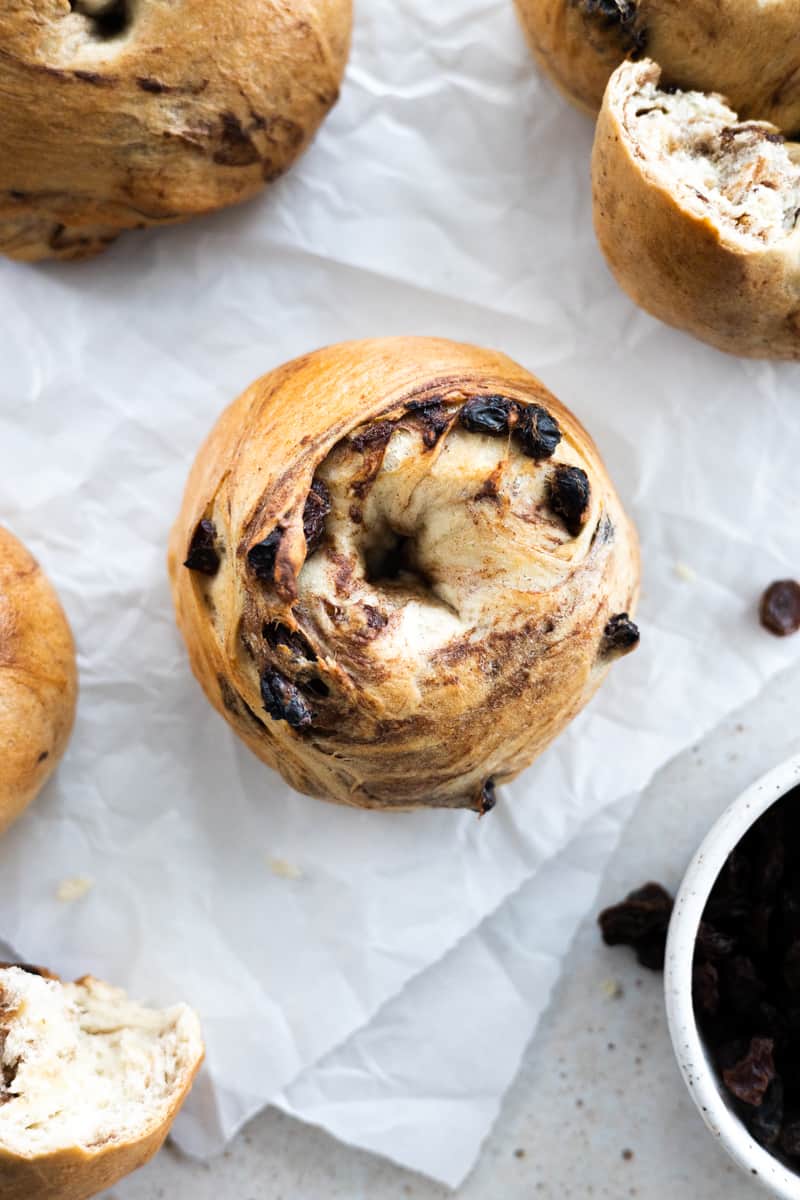
Looking for other sourdough discard recipes? Check out these Sourdough Discard Cinnamon Rolls, this Rosemary Sourdough Focaccia, and these Sourdough Pretzel Buns. If you're looking for a plain bagel recipe, check out my recipe for Sourdough Discard Bagels.
And if you're new to working with sourdough, check out these in-depth posts on how to feed sourdough starter, how to use sourdough discard, and tips for struggling sourdough starter.
Jump to:
- Why you'll love this recipe
- Ingredients
- Substitutions & Variations
- How to make cinnamon raisin sourdough discard bagels
- Expert baking tips
- How to shape bagels
- What is Sourdough Discard?
- Working with Sourdough Discard
- Equipment
- Do I need to use a stand mixer?
- Storage
- Recipe FAQ
- Cinnamon Raisin Sourdough Discard Bagels
Why you'll love this recipe
- Easy weekend bake! Homemade bagels are an easy weekend bake. Once you realize just how easy they are you may never run out to the store for bagels on the weekend again!
- These bagels are packed with flavor - the delicious cinnamon and raisin combo is a classic!
- This is a same-day recipe; you'll have fresh cinnamon raisin bagels to enjoy in just a few hours!
- Less than 30 minutes of prep! Most of the time making this recipe is rise time; there is actually less than 30 minutes of prep to make these bagels.
- Homemade bagels freeze well so it's great to make a batch and then freeze the bagels to enjoy throughout the week.
Ingredients
As long as you have sourdough discard, you are well on your way to making these bagels!
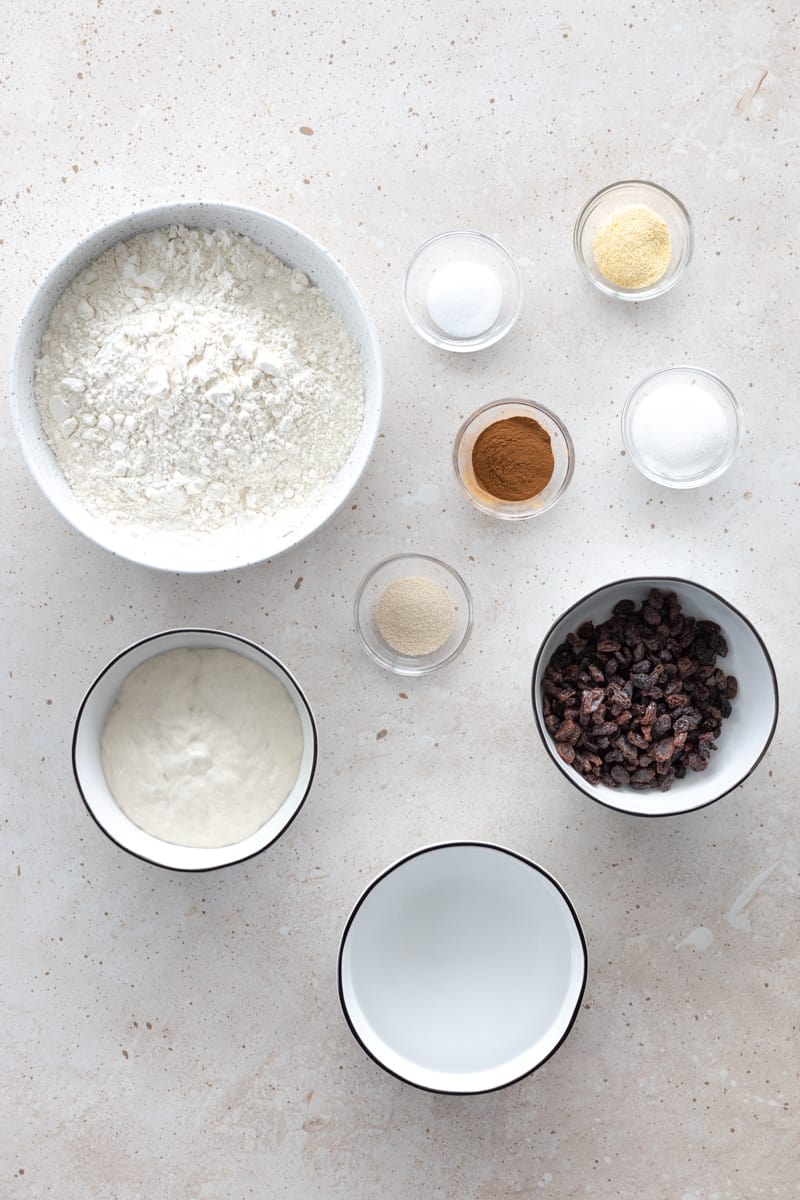
- Bread flour: Using bread flour is important for the texture of these bagels. If needed, you could substitute all-purpose flour (but you can expect the texture to be softer than a normal bagel).
- Instant yeast: Even though we are using sourdough discard, you will still need to use some yeast. Why? In order to keep the rise time reasonable, a little extra yeast is needed to help make these rise the way we want them to. If you've ever made sourdough bread, you know that is a multi-day process. We're trying to avoid that with these bagels!
- Sourdough discard: This should be unfed and at room temperature. This is important to make the bagels rise correctly. This recipe is designed for a sourdough discard with a 1:1 ratio (1 part water, 1 part flour). If you are working with a discard with a different ratio, you will need to tweak other ingredients in this recipe.
- Raisins: The first thing you'll do is let the raisins soak in warm water while you make the dough. This helps them plump up a little bit so they're juicy in the final bagel.
See the full recipe below for detailed instructions.
Substitutions & Variations
This bagel recipe is very adaptable; below are a few variations that are great to try:
- Change up the raisins - Consider trying this with golden raisins, dried cranberries or another dried fruit. Depending on your fruit choice, you might want to leave out the cinnamon!
- Omit the cinnamon - Not into the cinnamon? Leave it out!
- Add nuts - These bagels are delicious with crushed walnuts added. Reduce the raisins to ¾ cup, and add ¼ cup of crushed walnuts to the dough as you're kneading.
- Blueberry Sourdough Discard Bagels: Fresh blueberries are a great addition to a bagel. They do contain quite a bit of water, so the recipe needs a few modifications. Check out this recipe for Sourdough Discard Blueberry Bagels.
- If you're looking for a plain bagel option, check out my Sourdough Discard Bagels recipe.
I have not tested this recipe with other variations, but if you do, let us know how it turns out in the comments! I always love to hear how you're adapting these recipes and use those as ideas for future recipes as well!
How to make cinnamon raisin sourdough discard bagels
These bagels only need one rise and come together in a few easy steps. You'll have them ready in no time!
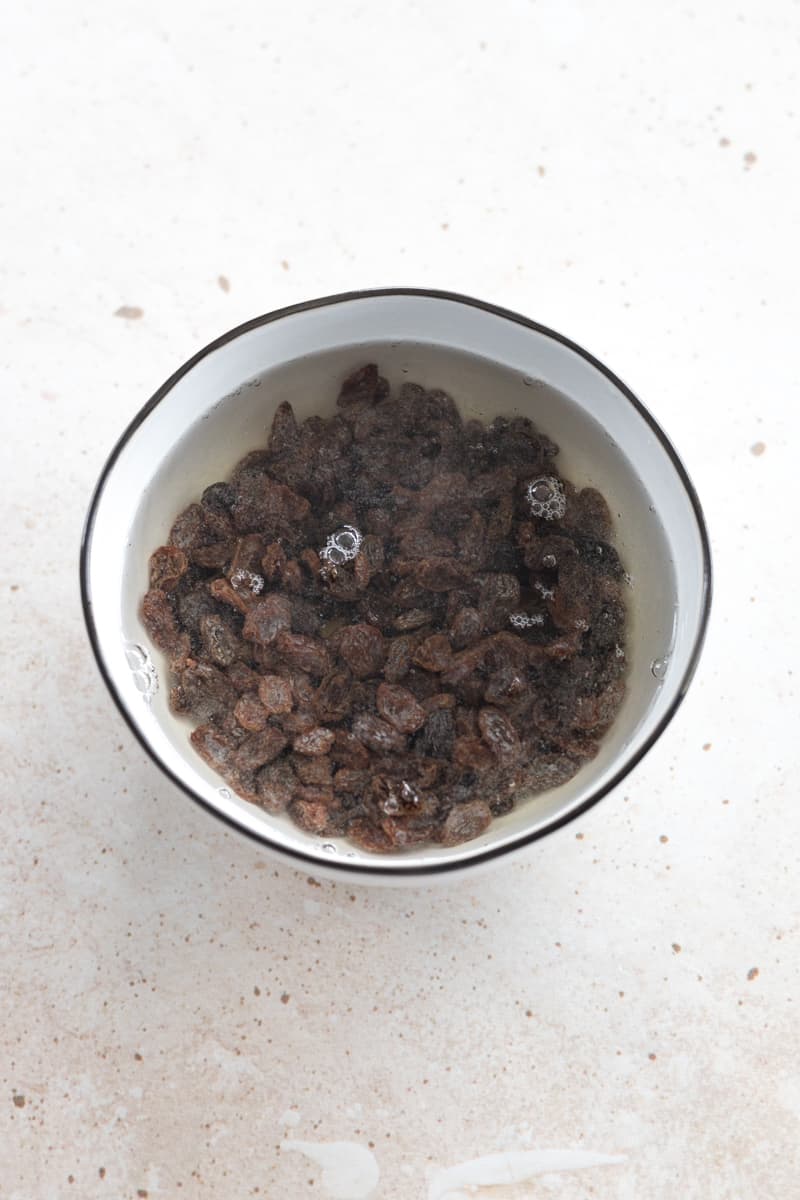
First, soak the raisins in a bowl with 2 cups of warm water while you make the dough.
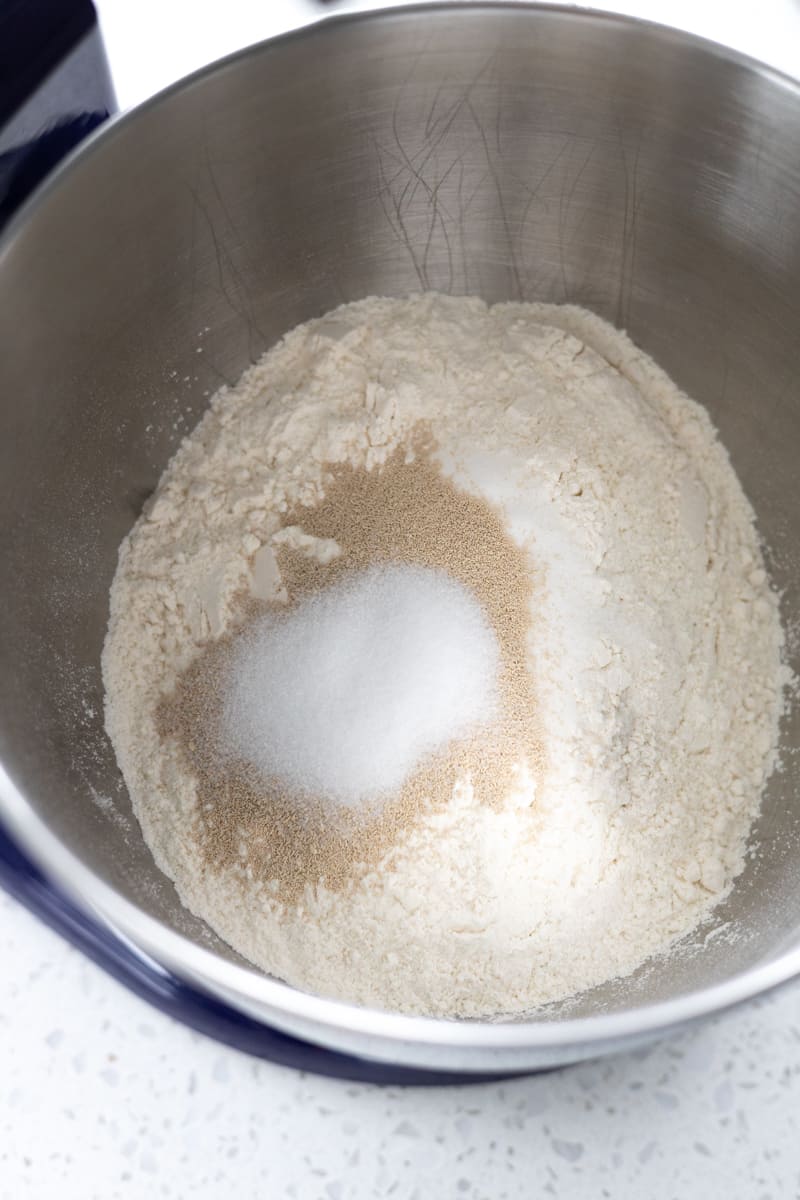
Combine flour, 1 Tablespoon of granulated sugar, yeast, and salt in the bowl of a stand mixer fitted with the dough hook attachment. Mix to combine.
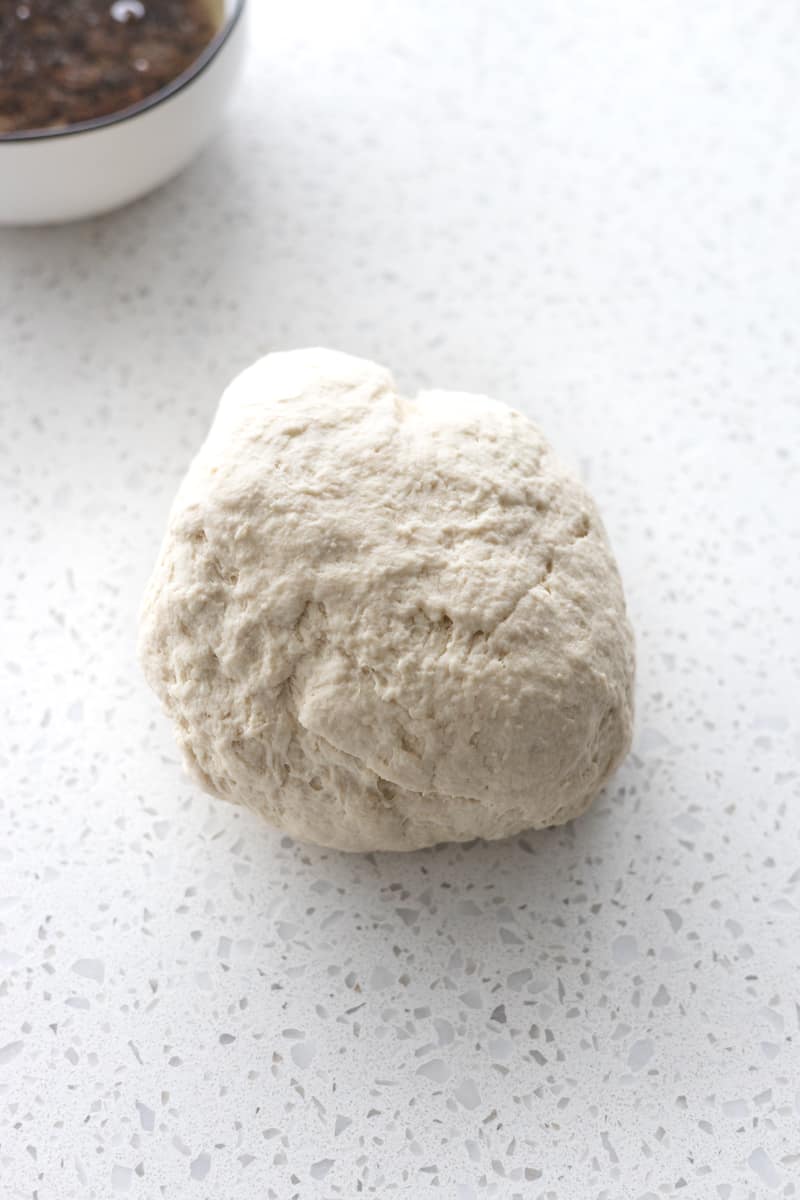
With the mixer on low, slowly add the sourdough discard and one cup of warm water. Increase speed to medium and knead for 3-4 minutes until a smooth, sturdy dough forms. Knead by hand, if preferred.
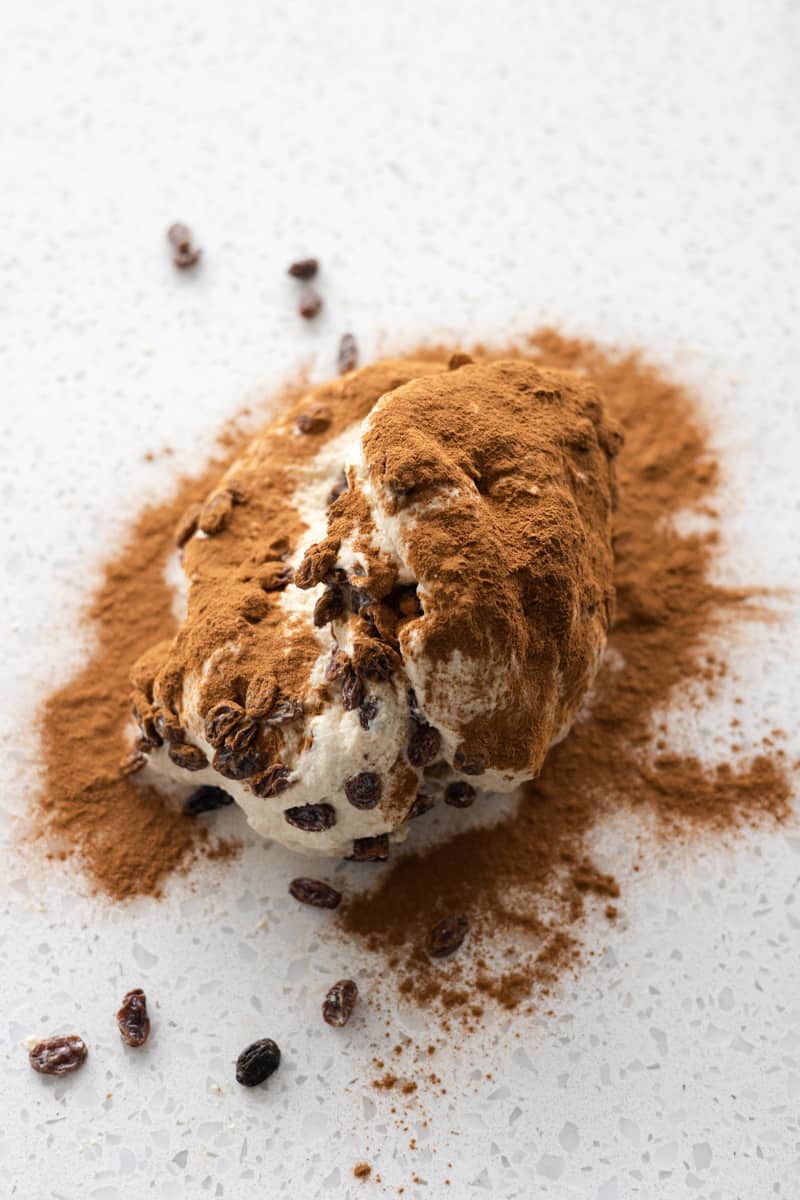
Drain the raisins and discard the excess water. Transfer the dough to a work surface, use your hands to flatten it slightly, then add the raisins and cinnamon. Carefully knead until incorporated. This will be messy, so start slowly! Knead until the raisins are well mixed, but the cinnamon can still be streaky.
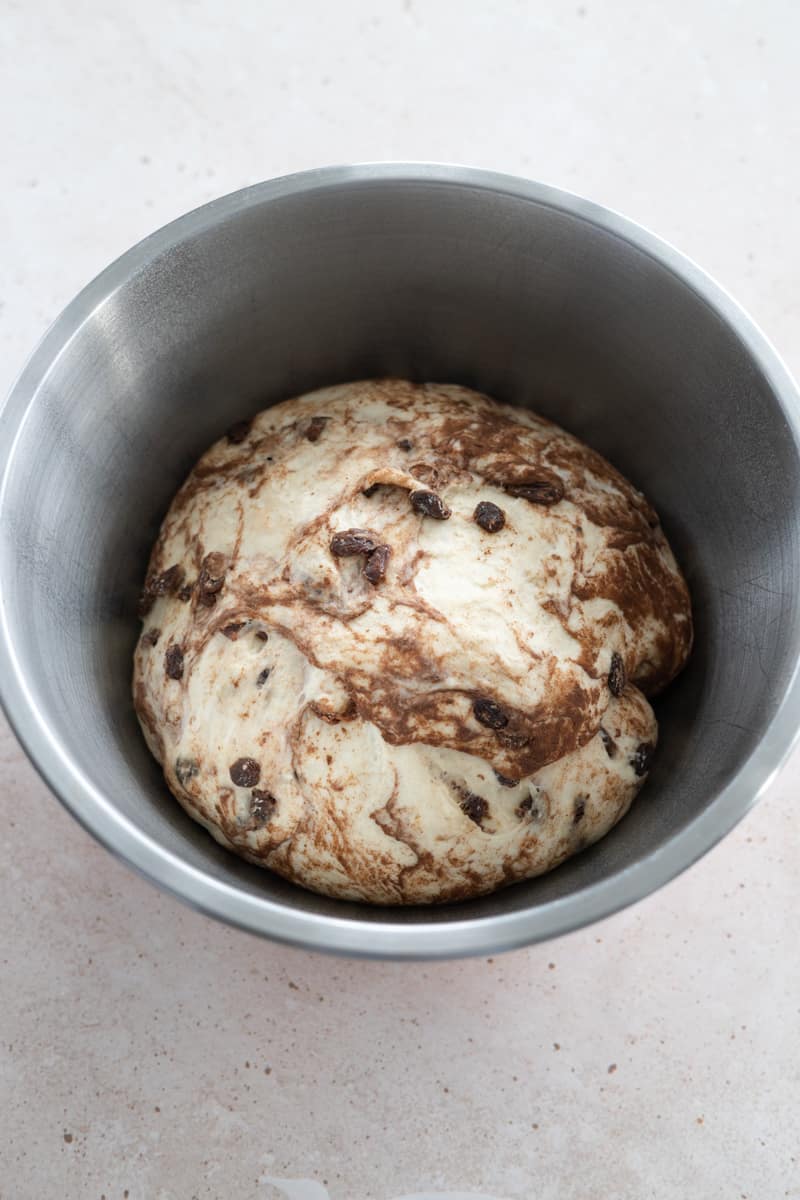
Transfer dough to a large, oiled bowl and cover with plastic wrap. Let rise for 90 minutes, or until doubled in size.
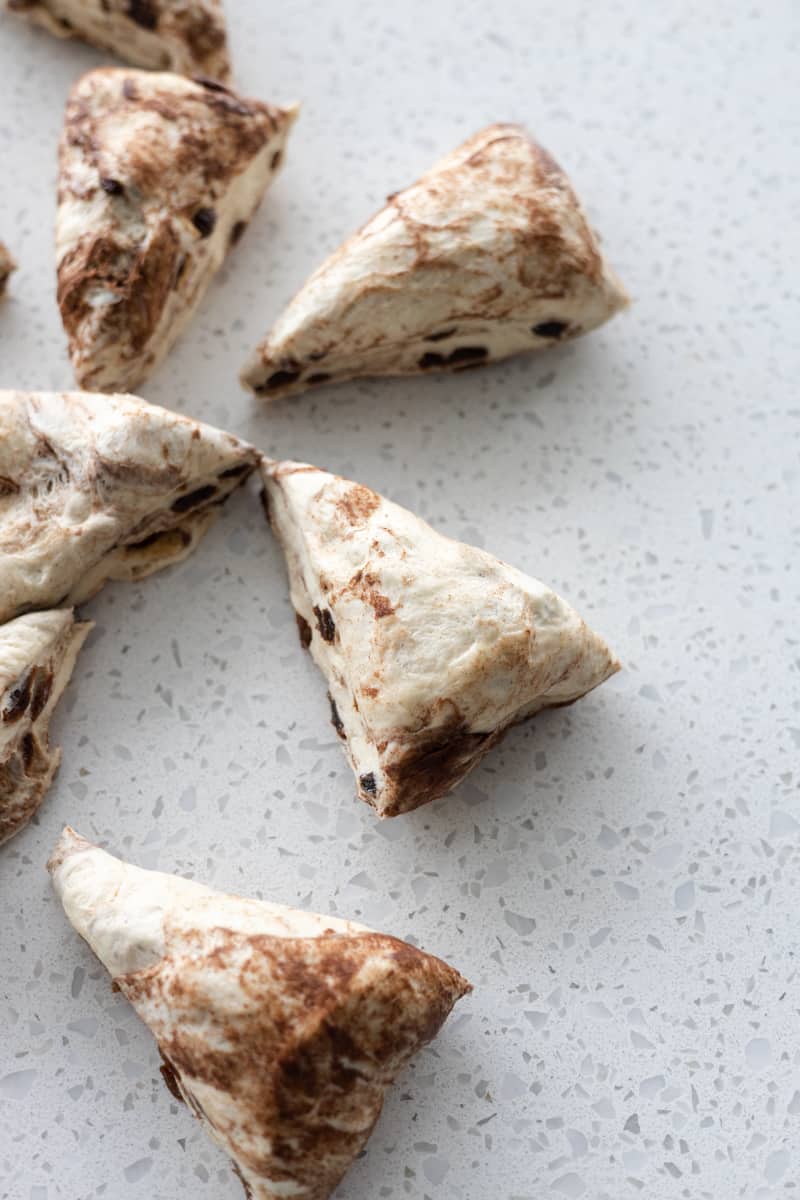
Transfer the dough to a work surface and divide into 8-10 pieces. 8 pieces will make large bagels; 10 pieces will make smaller bagels. This doesn't have to be perfect; you can just eyeball it.
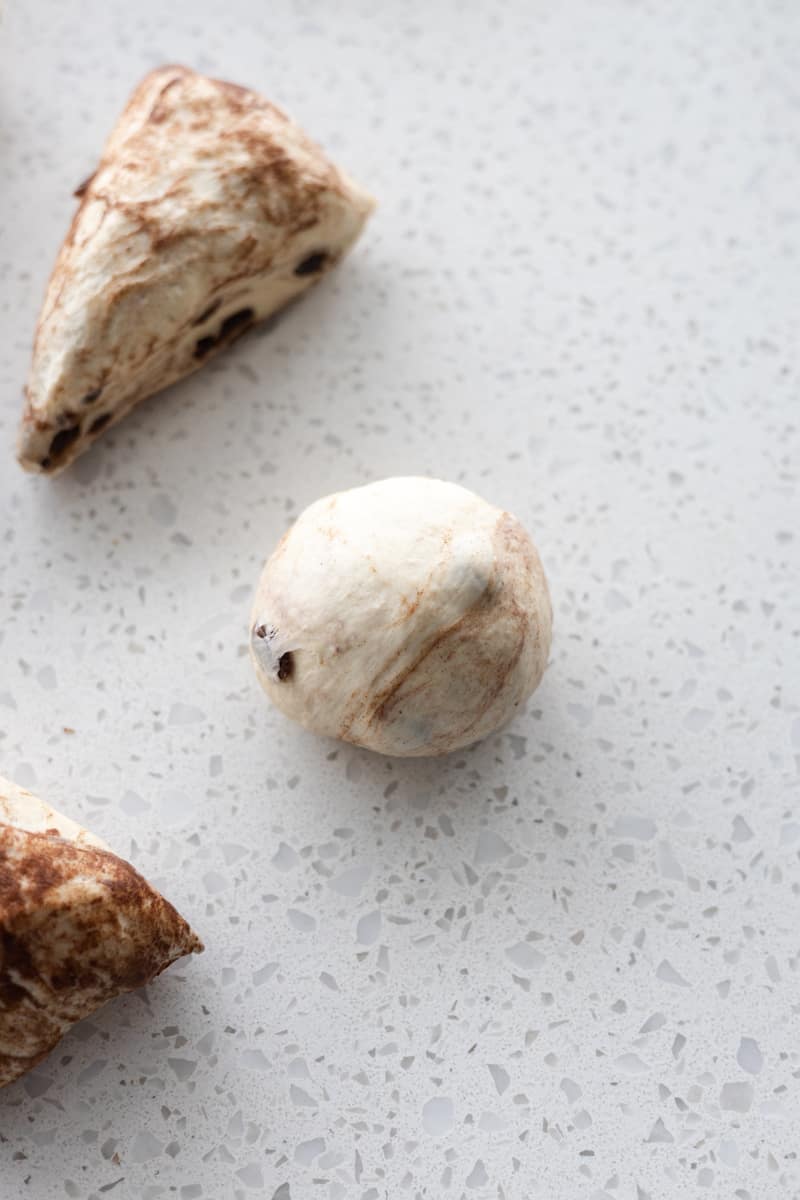
Roll each piece in your hands, using the friction against your palm to create a ball.
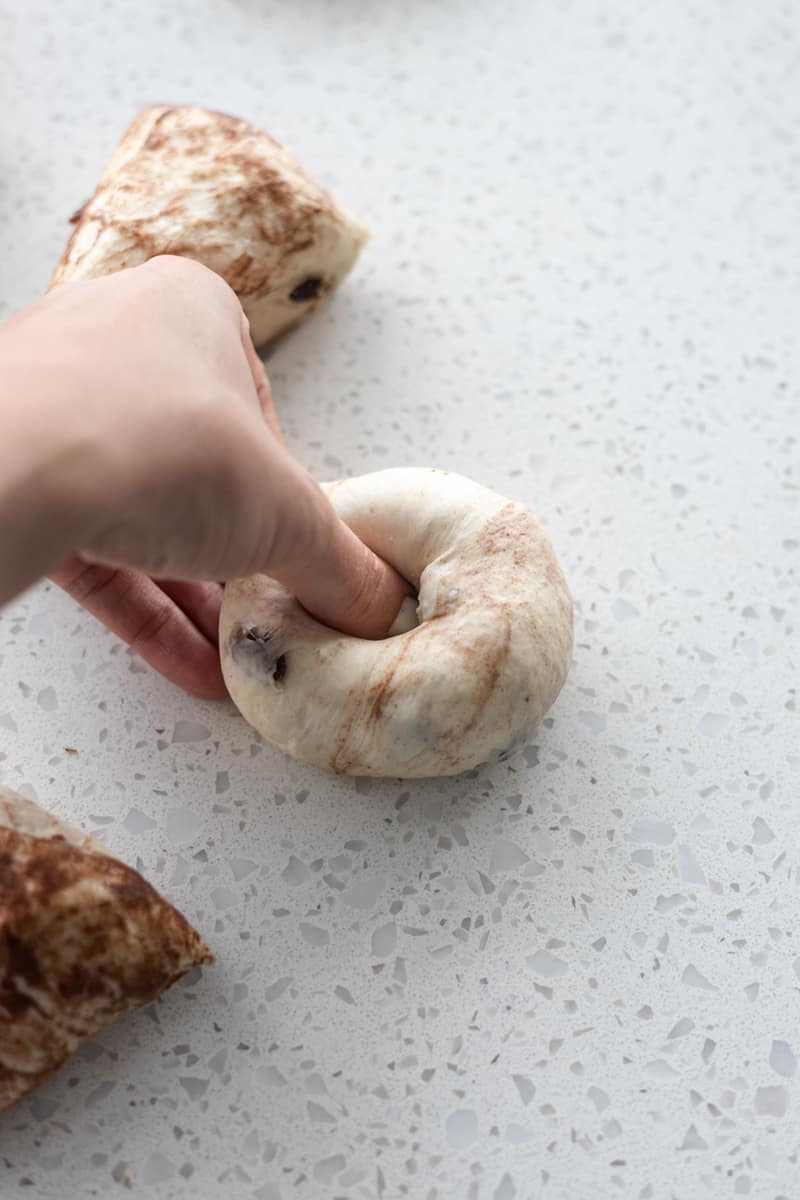
Press your thumb through the center of the dough ball, then stretch the center to make the bagel your desired shape. Let the bagels rest for 20 minutes covered with a clean kitchen towel.
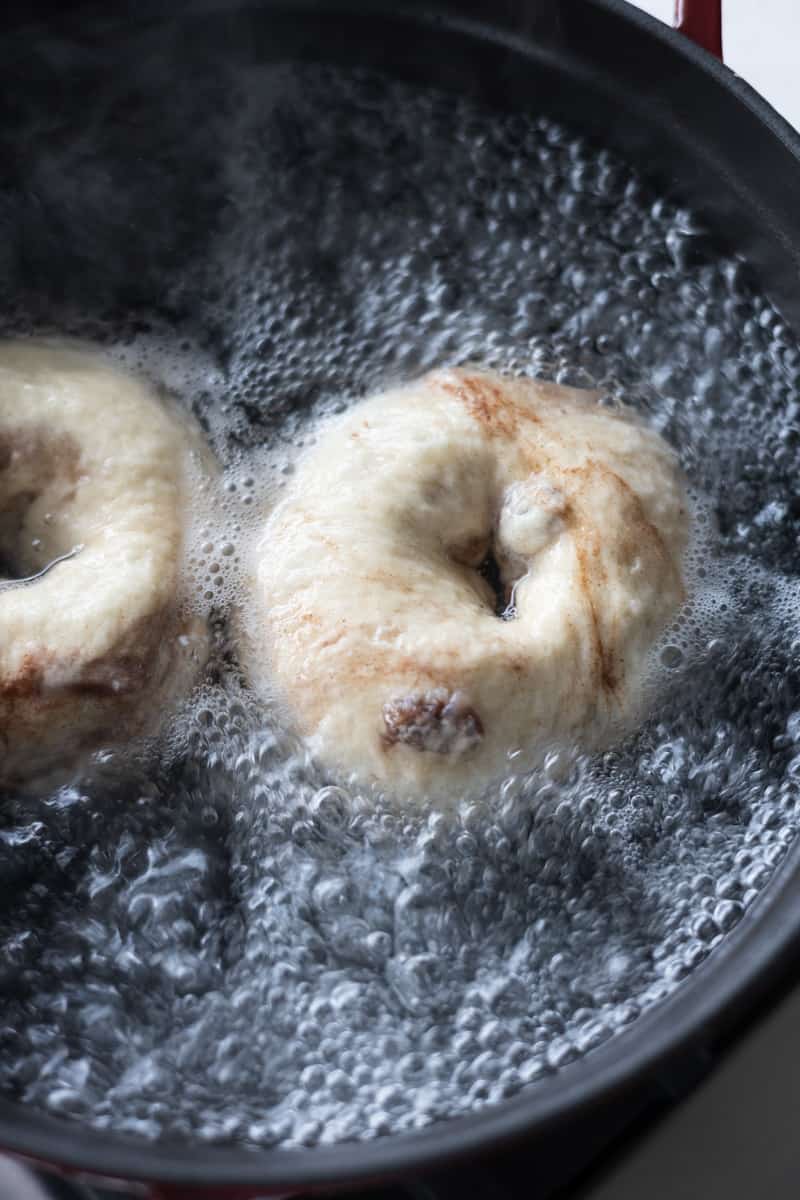
Bring a pot of water plus 2 Tablespoons of sugar to a boil. Boil each bagel for 15-30 seconds on each side. Boiling longer will make for a thicker, chewier crust on the bagel.
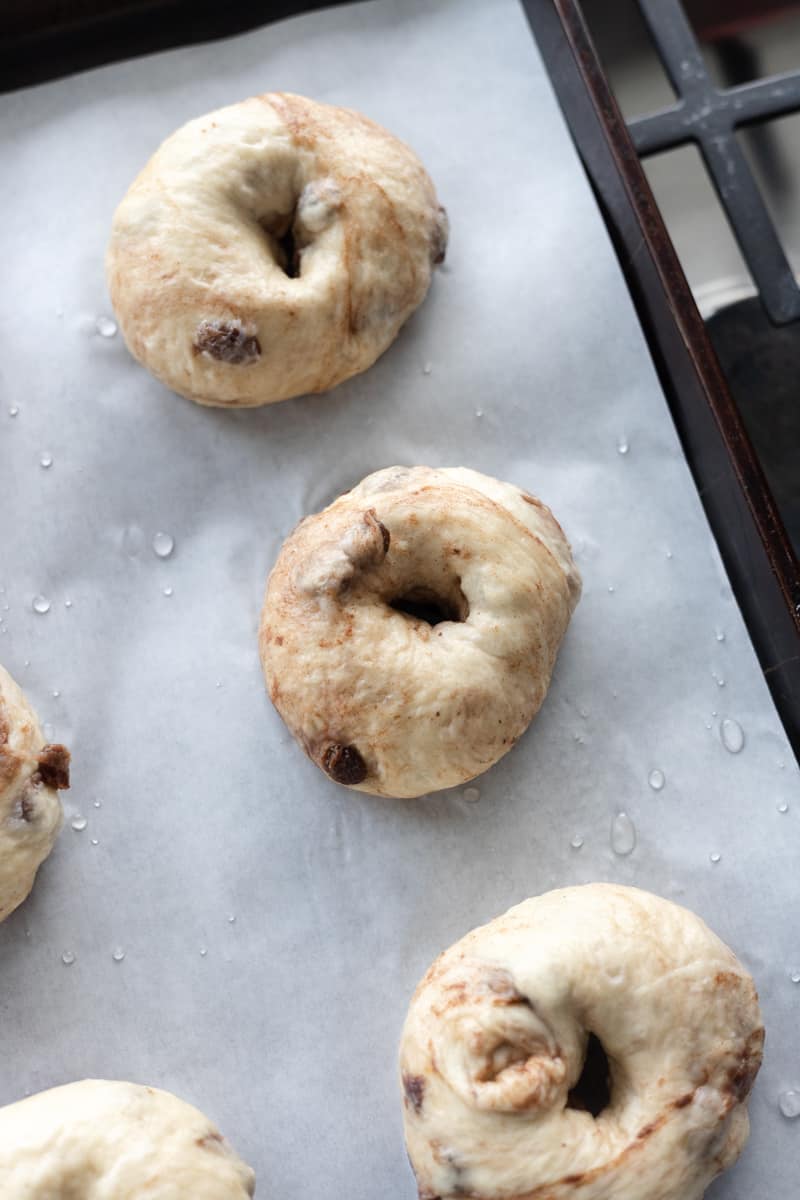
Transfer to a baking sheet lined with parchment paper and bake for 20-25 minutes until golden brown. Let cool fully before slicing and serving.
Expert baking tips
- Kneading will be messy, and that's ok! When you start kneading and adding the cinnamon and raisins to the dough, it will be messy, especially if you're kneading by hand. Keep kneading and the dough will slowly incorporate the ingredients. The raisins may add a little extra water to the dough as well; this is ok! Keep kneading and it will come together.
- Leave the cinnamon streaks and stop kneading when you feel the raisins are incorporated. We love to see those cinnamon streaks in the final bagel!
- After kneading, the dough will be fairly sturdy and should not be sticky as it goes into the first rise.
- Every sourdough starter (and therefore every sourdough discard) is different. You may need to add some additional flour or water to reach the desired dough consistency. If your dough seems too dry, add more water, 1 Tablespoon at a time. If your dough seems too sticky (wet), add more flour, 1 Tablespoon at a time.
- Make your bagels more or less chewy to suit your taste by boiling them for a shorter or longer amount of time. Boiling for less time will create a less chewy crust. Boiling for longer will create a chewier crust. I like to boil mine for 30 seconds on each side for a thinner crust, but you can go for anywhere from 30-60 seconds


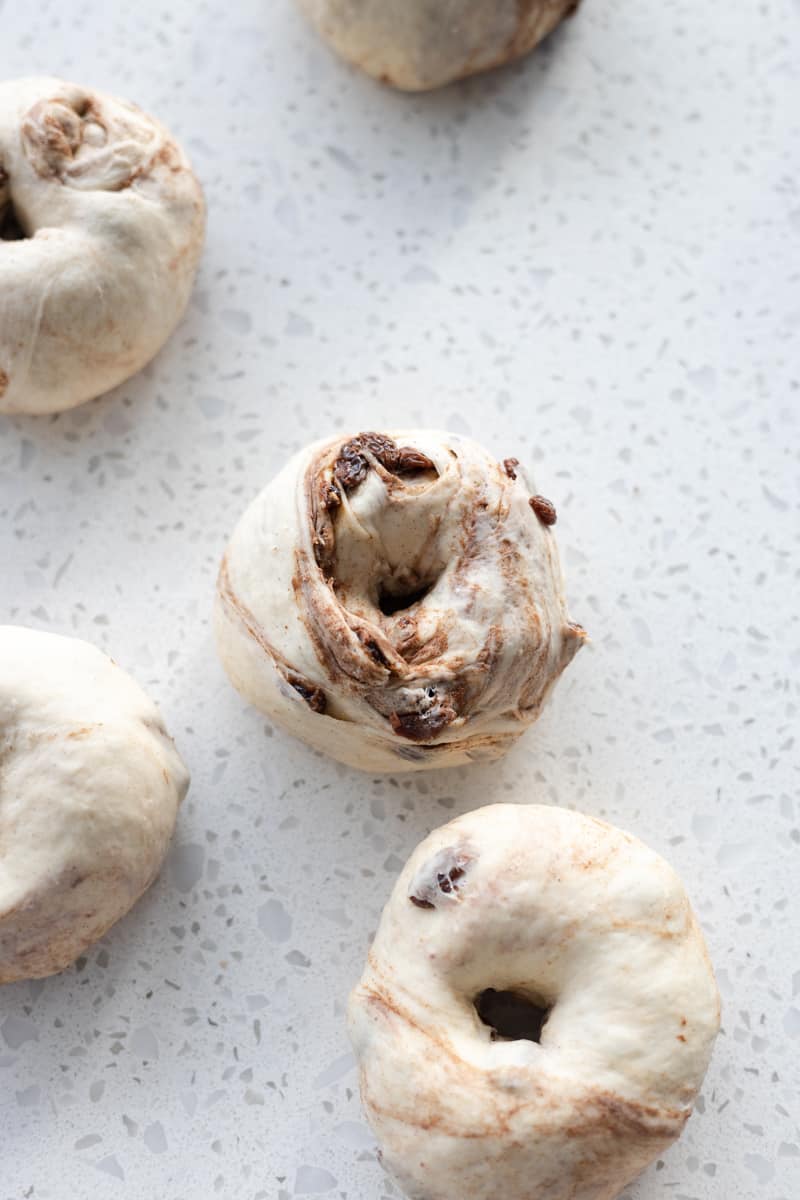
How to shape bagels
To shape the bagels, first, divide the dough into 8-10 equal pieces. 8 pieces will yield larger bagels and 10 pieces will yield smaller bagels. This doesn't have to be precise; you can eyeball the dough as long as the pieces seem roughly equal.
Roll the dough in the palm of your hands, using one palm to create friction on the bottom of the bagel. This will be the bottom of the bagel (the "ugly" side), so don't worry too much about what it looks like. The top of your bagel ball should be round and smooth.
Use your thumb to press a hole through the center of the dough ball. Roll the bagel around your thumb to enlarge the hole to your liking. Keep in mind these will rise and expand substantially, so make the hole larger than you think it should be!
Top Tip: The bagels may be a bit lumpy due to the raisins, and that is ok! If the raisins fall out of the dough, you can press them back in. If the bagel breaks, you can always re-roll / reshape it. They will likely not look perfect, and that's part of their charm.
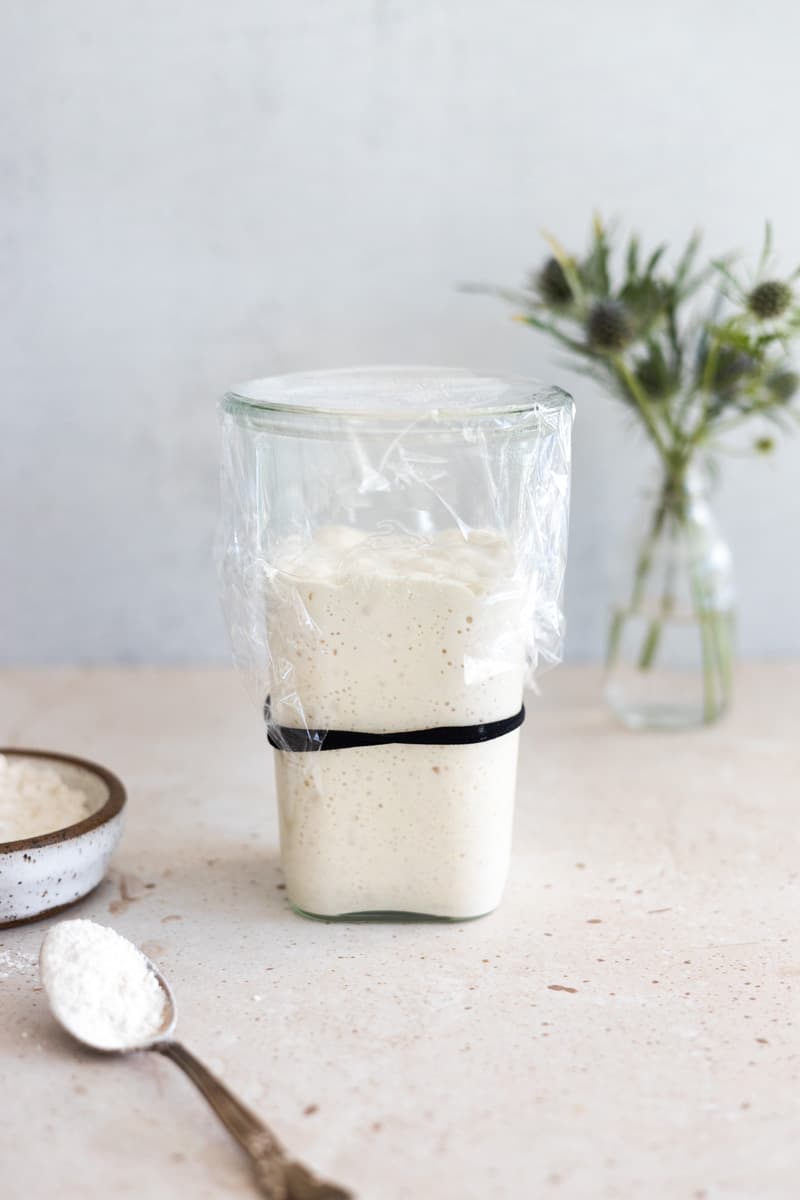
What is Sourdough Discard?
Sourdough discard is what is left over when you feed your sourdough starter. A sourdough starter is a live fermentation of flour and water, generating natural yeast and good bacteria.
You can either make a sourdough starter from scratch (I recommend this recipe), or you can buy one. You can also get one from someone (a friend or neighbor), who has a sourdough starter and is open to sharing some of the discard with you.
If you are making sourdough starter, know that it is a multi-week process. This isn't something you can whip up before starting this recipe.
Once you have a sourdough starter, you need to feed it regularly. To do so, you measure out a certain portion of the starter, and feed it with fresh warm water and flour. The portion of the original starter that is left over (that doesn't get fed), is the discard. You can either literally discard this (throw it away or compost), or you can use it in sourdough discard recipes like this one. It adds more lift to bready recipes (as it is creating its own yeast) as well as a delicious sour tang.
Check out this post for an in-depth guide on how to feed sourdough starter
Working with Sourdough Discard
This recipe is designed for sourdough discard with a 1:1 ratio (1 part flour, 1 part water). If your discard has a different ratio, you may need to tweak certain ingredients in this recipe.
Make sure your sourdough discard is unfed and at room temperature for this recipe. That will help to ensure the dough rises correctly.
Equipment
I like to use a KitchenAid 5-Quart Stand Mixer fitted with a dough hook to mix the dough, but you could also do this by hand with a large bowl and wooden spoon. Use a kitchen scale to measure the sourdough starter. You'll need a large bowl where you'll let the dough rise.
You'll also need a large pot (I like to use a Staub Cocotte) to boil the bagels, as well as baking sheets and cooling racks.
Do I need to use a stand mixer?
I like to use a stand mixer to start the bagel dough, but you don't have to! You can mix the dough in a large bowl with a wooden spoon, then knead by hand - no stand mixer needed.
Kneading by hand allows you more control over the dough. You can feel it when the dough is smooth and reaches the texture you're looking for. Even if I start with the stand mixer, I always do some kneading by hand as well!
Storage
Room Temperature Storage: Store these Cinnamon Raisin Sourdough Discard Bagels at room temperature in a sealed plastic bag or an airtight container if you plan to eat them within 1-2 days. You can reheat the bagels in the microwave for about 30 seconds to make them warm and soft again.
Freezer Storage: Once the bagels are fully cooled, store them in an airtight container or freezer-safe bag for up to 3 months. To reheat, warm the bagels in the microwave for 30-60 seconds until warm and soft again.
Recipe FAQ
You will need to add yeast to this recipe to make sure the bagels rise appropriately, and to keep the rise times manageable. If you've ever made sourdough bread, it's a multi-day process. We're wanting to avoid that with this recipe!
You can leave the cinnamon out if you'd like.
Boil the bagels for 15-30 seconds on each side. Boiling for a longer time will make the bagels have a thicker, chewier crust. I personally like to boil them for 30 seconds on each side!
This recipe is designed to be made with sourdough discard. Without it, you would need to modify several of the ingredients and process steps.
When you're kneading the raisins and cinnamon into the dough, it will be very messy. Keep kneading (about 3-4 minutes) until the raisins start to incorporate into the dough. The dough will also soak in any excess water left over from the raisins. The cinnamon will be streaky throughout the dough.

Cinnamon Raisin Sourdough Discard Bagels
Ingredients
- 1 cup raisins
- 3 ¾ cups bread flour
- 3 Tablespoons granulated sugar divided
- 1 teaspoon instant yeast
- 2 teaspoons kosher salt
- 200 grams (about ¾ cup) sourdough discard unfed, at room temperature
- 1 ¼ cup warm water plus more for soaking raisins
- 1 Tablespoon ground cinnamon
Instructions
- Place the raisins in a small bowl and cover with warm water while you make the dough.
- Combine flour, 1 Tablespoon granulated sugar, yeast and salt in the bowl of a stand mixer fitted with a dough hook attachment. Mix to combine. With the mixer on low speed, slowly add the sourdough discard and water until combined. Drain and add the raisins (discard the water the raisins were soaking in). Increase speed to medium and knead for 3-4 minutes until a smooth ball forms. This will be a sturdy, very thick dough. If needed, add more water or more flour (1 Tablespoon at a time), depending on your sourdough discard, until you reach the right dough consistency.
- Transfer the dough to a work surface. Sprinkle with cinnamon and knead until incorporated, but still streaky. This can also be done in the stand mixer, if you prefer.
- Transfer the dough to a large, greased bowl and cover with plastic wrap. Let rise 90 minutes at room temperature, or until doubled in size.
- Turn the dough out onto a work surface, and divide into 8-10 equal pieces. 8 pieces will make 8 large bagels; 10 pieces will make 10 smaller bagels*. Roll each piece in your hands to create a smooth ball, using one palm for friction to seal the bottom of the bagel. Press your thumb through the center of the ball to create the hole. Stretch the hole to reach your desired bagel shape (keep in mind these will rise and expand!). Cover the shaped bagels with a clean kitchen towel and let rest for 20 minutes while you prepare the next step.
- Preheat oven to 425°F. Line two baking sheets with parchment paper and set aside. Bring a pot of water with 8 cups of water and 2 Tablespoons of sugar to a boil.
- Place each bagel into the boiling water for 15-30 seconds on each side**. You can likely fit 2-3 bagels into the pot of water, but make sure there is room for them to move around and expand. Use a slotted spoon to transfer the boiled bagels to the prepared baking sheet. If needed, you can reshape the bagels a little once they've been boiled.
- Bake for 20-25 minutes or until golden brown. Transfer to a cooling rack to cool before slicing and serving.



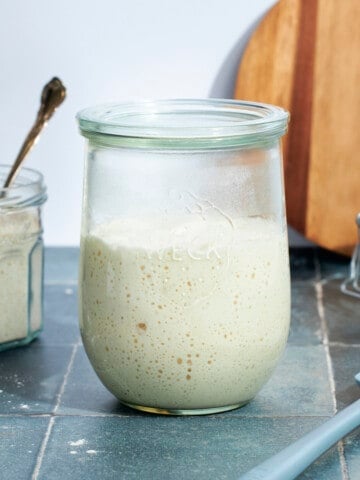

Megan Scott says
Absolutely delicious bagels! I made both these and your plain bagel recipe this week, and had perfect result each time. The crust is chewy but not tough, and the bagels are fluffy inside. I get 9 bagels. (about 100 gm of dough each); slightly smaller than deli sized, but perfect for breakfast.
Melissa says
Has anyone tried this recipe, but with chocolate chips?
Jessica Vogl says
That should work!
Jenna says
These sound amazing! What is the best way to store them?
Jessica Vogl says
There is a storage section in the post above!
Noelle says
Tried these for the first time today. Easy and delicious! My family loves them!
Debbie says
Oh my goodness!! These were super easy and my house smells amazing! I can’t wait for them to come out of the oven shortly!!
Joanne says
Oh my goodness. These were so easy to make, and so delicious. They reminded me of the bagels I used to buy at a Jewish bakery in Florida many many years ago. I made eight they were huge. I could probably make them smaller next time. Thank you so much for this recipe. ☺️
Tiana says
I’ve been making them every weekend for about a month. They are perfect! I always double the recipe for my hungry teens!
Morgan says
They’re so delicious. Soft and chewy. So much better than anything you get from the store.
Hevan Biles says
Such an easy recipe! I used active dry yeast and bloomed it in the warm water before adding it. They just came out of the oven, let me just say they taste as good as they smell.
Jessica Vogl says
So glad you liked it!!
Renee says
These are amazing I added a sugar cinnamon crunch on top amazing